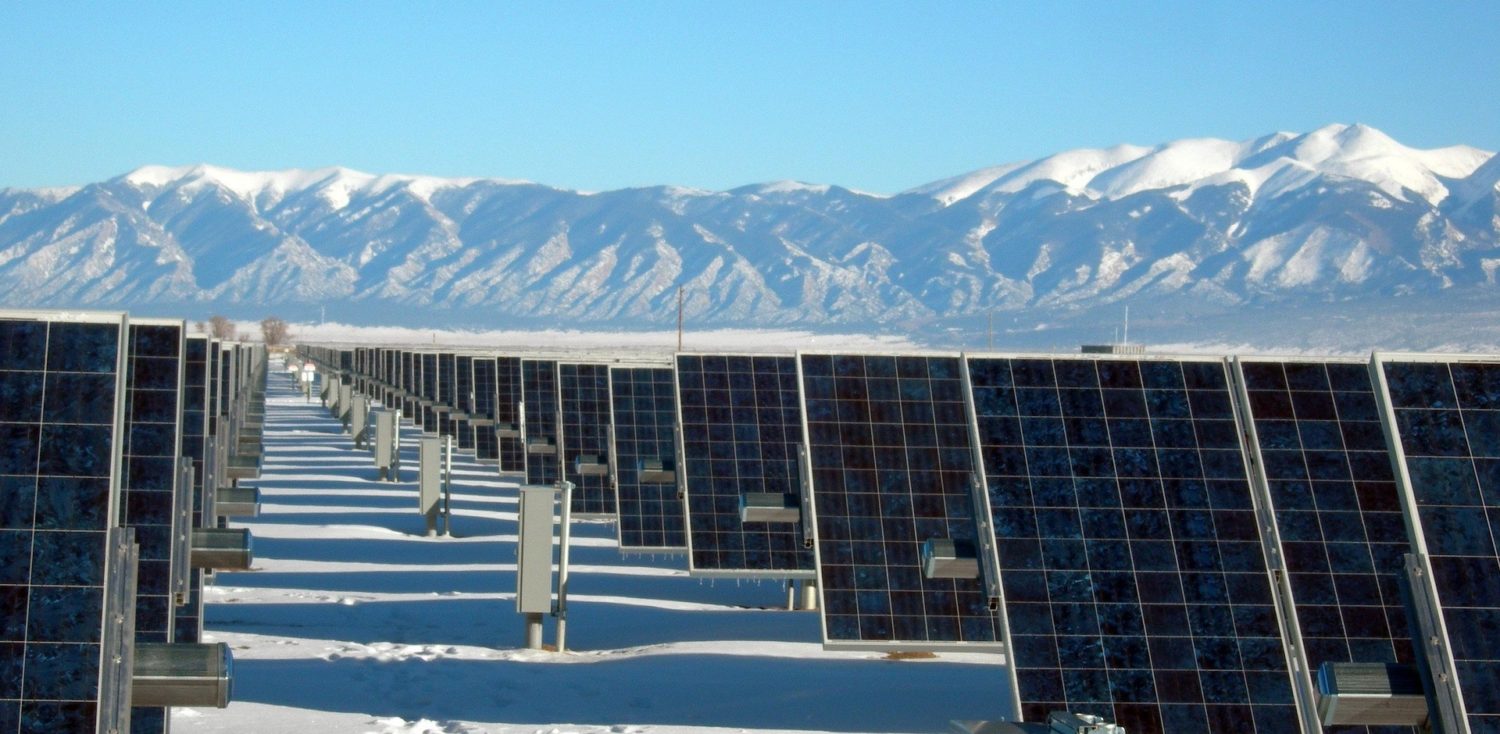Two Alaska electric utilities are taking steps that could lead to the construction of the state’s first community solar farms, while a consumer interest group is drafting legislation that could support the efforts.
Advocates say the moves by the Anchorage and Fairbanks utilities could lead to projects that allow any household to invest in solar panels to reap their benefits, including low-income residents who can’t afford to install their own rooftop array like many Alaskans are doing.
Tom DeLong, board chair for the Golden Valley Electric Association in Fairbanks, said participants could invest in a share of a farm in potentially different ways, depending on how the utility might structure a plan. A ratepayer could make a one-time payment upfront, perhaps, or pay a tiny amount over time through a slightly higher electric bill. They could see lower electric bills in the years to come.
“It’s a hedge against rising rates,” DeLong said.
Chugach Electric Association, the largest utility in Alaska, is also beginning to take a new look at the idea of a community solar farm in Anchorage, after the Regulatory Commission of Alaska in 2019 rejected an earlier proposal from the utility, citing problems with details of the plan.
“Our members have expressed interest in community solar, so we are looking at the feasibility of another project,” said Julie Hasquet, a Chugach Electric spokeswoman.
Interest in the community farms, which have been implemented in many other states, comes as renewable use is growing in Alaska, and not just on rooftops. Private companies are undertaking ambitious efforts to build solar and wind farms, while utilities are also pursuing upgrades to the grid to support renewables. Driving factors include new federal tax incentives and uncertainty over future natural gas supply in Cook Inlet, the main source of electricity in Alaska.
[Construction of Alaska’s largest solar project gets underway in Houston]
‘Significant and vocal’ interest
Golden Valley Electric has directed its staff to study the idea of building a community solar array in Fairbanks, after a task force recommended that one be built on utility-owned land, DeLong said.
“We’re a cooperative, we’re owned by our members, and a significant and vocal group has expressed an interest in this,” DeLong said.
The task force recommended that residential ratepayers be allowed to buy a share of a panel to start with, and up to a full panel or more later, to facilitate broad participation in the project.
“We also recommend flexible eligibility that allows members to pre-purchase the panels in a six month or one year plan, in essence a Community Solar layaway plan,” the task force said in a report to the utility board. ”Smaller monthly payments will help accessibility by low to moderate income members in the community solar.”
The task force recommended the utility should quickly file a plan with the Regulatory Commission of Alaska.
The agency would approve how the payment is structured for participants, and would make sure a program does not discriminate against non-participants, DeLong said.
Chugach Electric will be informed by past effort
The Regulatory Commission in 2019 called Chugach Electric’s proposal for a community solar farm “confusing and undefined.” The agency raised concerns that all ratepayers would bear financial responsibility, not just the participants. But the regulators emphasized the state’s strong interest in renewable energy and said it did not want to discourage innovative programs.
That earlier proposal envisioned a solar farm built on utility-owned land in Anchorage, costing $2 million or less, with 2,000 panels. It could have generated about 15% of the power for about 500 participating households. Retail ratepayers could have made a prepaid investment or subscribed monthly, with the energy output of their share provided as a credit on monthly bills over the project’s 25-year life.
That earlier effort can inform this new proposal, Hasquet said. But Chugach Electric has no details proposed for this new round, Hasquet said.
“Understanding the concerns of the RCA with our previous project should help us craft a project that could get regulatory approval,” Hasquet said. “Many factors still need to be determined, including size, scope, and costs.”
[A small Fairbanks company wants to build Alaska’s biggest wind farms]
Chugach Electric recently sent a survey to “the more than 600 members who had shown interest in our 2017/2018 community solar project,” Hasquet said in an email. “We had a list of members who had asked to be kept informed of progress on a project. We believe that is a good place to start on determining the feasibility of a newly designed project.”
Groups working on draft legislation
The Alaska Public Interest Research Group is working with groups such as The Alaska Center to finalize draft legislation that could help enable the creation of the projects in Alaska, if it is approved by the Legislature, said Phil Wight, a policy analyst with the group.
The consumer interest group supports community solar farms because they’re another way to lower electric rates, he said. The Alaska Center also highlights climate benefits as another good outcome, as solar power replaces energy from fossil-fuel sources such as natural gas.
Legislation supporting community solar farms could create jobs, diversify the economy and help Alaska achieve its goal of 50% renewable energy by 2025, said Rachel Christensen, clean energy organizer with The Alaska Center.
[CIRI looks to triple power at Fire Island wind farm]
Wight said it’s a promising time for the projects in part because tax credits in the federal Inflation Reduction Act passed in August could cut project costs in half, or more.
“It’s really about bringing the lowest-cost energy to Alaskans,” he said.

